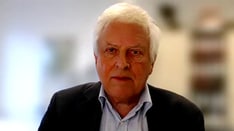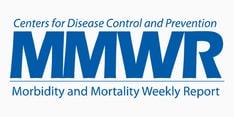TOPLINE:
Combined clopidogrel and aspirin initiated within 72 hours of a stroke is associated with a lower risk for a new stroke at 90 days but has a higher risk for moderate to severe bleeding than aspirin alone, new results of a randomized trial showed, suggesting treatment can be given past the current 24-hour time window for the use of dual antiplatelet therapy in patients with an ischemic stroke.
METHODOLOGY:
- The analysis, part of the Intensive Statin and Antiplatelet Therapy for Acute High-Risk Intracranial or Extracranial Atherosclerosis (INSPIRES) trial, included 6100 patients, median age 65 years and 35.8% women, with a mild ischemic stroke, defined as a National Institutes of Health Stroke Scale (NIHSS) score ≤ 5, or a high-risk transient ischemic attack of presumed atherosclerotic origin, from 222 sites in China.
- Researchers randomly assigned patients within 72 hours of symptom onset to receive clopidogrel (300 mg on day 1 and 75 mg daily on days 2-90) plus aspirin (100-300 mg on day 1 and 100 mg daily on days 2-21) or clopidogrel placebo plus aspirin (100-300 mg on day 1 and 100 mg daily for days 2-90) in a 2 × 2 factorial design that also compared immediate vs delayed statin therapy.
- The primary efficacy outcome was any new stroke (ischemic or hemorrhagic) within 90 days.
- Secondary efficacy outcomes included a composite of cardiovascular events (stroke, myocardial infarction, or death from cardiovascular causes) within 90 days.
- The primary safety outcome was moderate to severe bleeding as defined according to criteria from the Global Utilization of Streptokinase and Tissue Plasminogen Activator for Occluded Coronary Arteries (GUSTO) trial.
TAKEAWAY:
- A new stroke within 90 days occurred in 7.3% in the clopidogrel-aspirin group and 9.2% in the aspirin group (hazard ratio [HR], 0.79; 95% CI, 0.66-0.94; P = .008).
- A composite cardiovascular event occurred in 7.5% in the clopidogrel-aspirin group and 9.3% in the aspirin group (HR, 0.80; 95% CI, 0.67-0.96).
- Moderate to severe bleeding occurred in 0.9% in the clopidogrel-aspirin group and in 0.4% in the aspirin group (HR, 2.08; 95% CI, 1.07-4.04; P = .03), and risk for any bleeding was 3.1% in the clopidogrel-aspirin group and 2.1% in the aspirin group (HR, 1.50; 95% CI, 1.09-2.06).
- Adverse events occurred in 21.3% in both groups, and serious adverse events occurred in 3.5% in the combination group and 2.9% in the aspirin group.
IN PRACTICE:
"The results of our trial potentially broaden the time window for the initiation of treatment, although there was more bleeding with the dual regimen than with the monotherapy," the authors wrote.
In an accompanying editorial, Anthony S. Kim, MD, Weill Institute for Neurosciences, University of California, San Francisco, said he welcomes evidence to support expanding the time window for dual antiplatelet therapy, adding: "Perhaps new, more targeted antithrombotic agents on the horizon may hold promise for delivering an even more favorable balance of benefits and risks among patients with stroke."
SOURCE:
The study was conducted by Ying Gao, MD, Department of Neurology, Beijing Tiantan Hospital, Beijing, China, and colleagues. It was published online on December 28, 2023 in The New England Journal of Medicine. Results from the INSPIRES trial were also reported at the European Stroke Organisation Conference in May.
LIMITATIONS:
The study excluded important patient populations such as those with a stroke of presumed cardioembolic origin and with moderate or severe stroke (NIHSS score > 5) and those who had undergone thrombolysis or thrombectomy. More than 98% of enrolled patients were Han Chinese who had a relatively high rate of intracranial artery stenosis, which may have contributed to the benefit from dual antiplatelet therapy. The results may not be generalized to White and Black patients with a stroke.
DISCLOSURES:
The study received support from the National Natural Science Foundation of China, National Key R&D Program of China, Beijing Outstanding Young Scientist Program, Youth Beijing Scholar Program, Beijing Talent Project-Class A: Innovation and Development, National Ten Thousand Talent Plan-Leadership of Scientific and Technological Innovation, Sanofi, and Beijing Jialin Pharmaceutical. Gao has no relevant conflicts of interest; disclosures of other study authors are available at NEJM.org. Kim reported grants from the American Heart Association, National Institutes of Health, and PCORI.





Comments